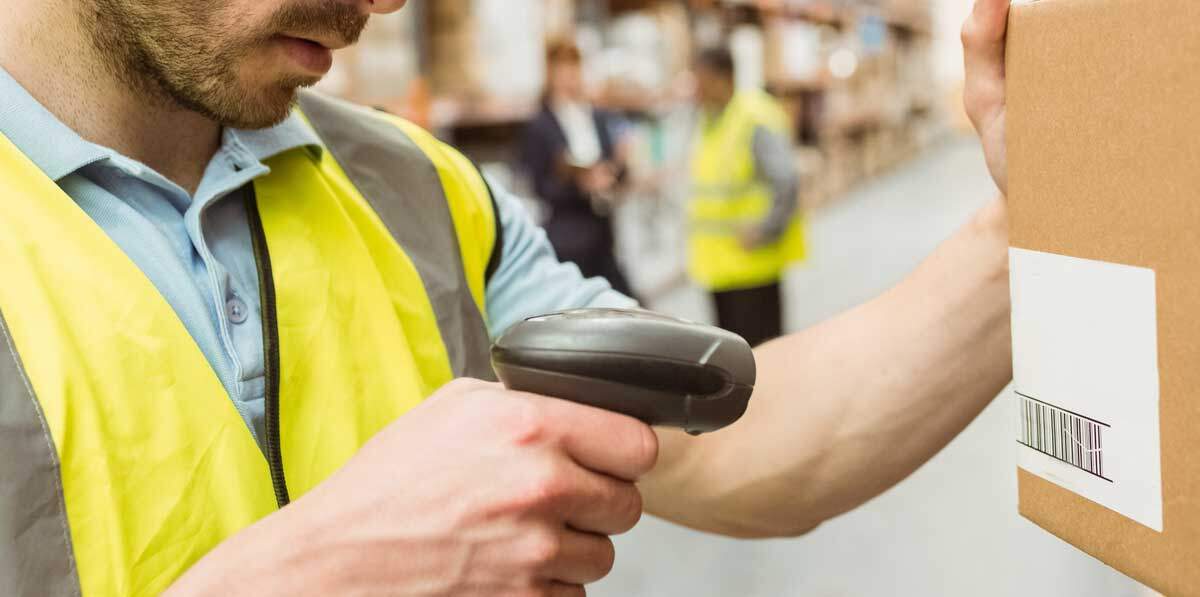
If you live and breathe e-commerce and want to accelerate your business by setting your foot on European Amazon soil, getting to know Amazon barcodes is a way to go. From this article, you will learn about universal barcodes and those specific to the largest marketplace out there. Finally, you will find out how to make the most of ASIN with the Nethansa Platform.
The percentage of internet users in Western Europe that bought goods online in 2021 was 87%. In the same Western Europe, as we write this article in March 2022, traffic on Amazon websites in Germany, the UK, France, Italy, Spain altogether hit a whopping 1148,2M visits! Yes, that’s over 1 billion only in March! If you want to tap into this flourishing market, you need to do some homework about Amazon barcodes, including ASIN.
But first, let’s start with explaining the universal barcodes such as GTIN, UPC, EAN, and ISBN.
Let’s start with the basic barcodes
Before we dive into the Amazon specifics, let’s briefly overview the alphanumeric codes used globally.
You can come across these sequences of digits every day. Go to get groceries and pick any product with a barcode label. Then, look at the number below the bars.
UPC (Universal Product Code)
Although it might get confusing, technically, GTINs, UPCs, EANs, or ISBNs mean the same. That’s because the GTIN code is a part of each following – UPC barcodes, EAN, or ISBN.
When it comes to the Universal Product Code (UPC), it’s a 12-digit GTIN code that refers only to the US and Canada.
EAN (European Article Number)
The “European” term in the EAN acronym indicates that the EAN number equals products from Europe. From the technical point of view, you will be looking at 13 digits and products and services from everywhere except the US and Canada.
ISBN (International Standard Book Number)
Take any book from your shelf, open it, and find an ISBN on the bottom of the first page. That’s it.
The ISBN is there to identify each published book. And it’s not only about good-old printed books; if anyone decides to pursue self-publishing on Amazon, it will also result in issuing an ISBN.
Amazon barcodes: why is it so crucial?
Now, let’s take a closer look at codes solely dedicated to the largest e-commerce marketplace. With 28 years in the business, over 353 million products, and nearly 200 million people worldwide visiting its pages, it’s no surprise that Amazon has developed its unique codes for efficient management and inventory.
We are talking about FNSKU, SKU, and most importantly – ASIN – barcode number that exists on Amazon only.
FNSKU (Fulfillment Network Stock Keeping Unit)
This is a scenario when you decide to sell goods on Amazon in the FBA model (click here to learn the difference between those two sales and logistics models – FBA vs. FBM), meaning – you will be sending your products to Amazon fulfillment centres, and from there they will begin their journey to your buyers’ households.
Let’s say you produced a series of unique jackets. To send them to an Amazon center, you need to have an FNSKU barcode on each unit for them to match it with your company.
Technically, you can recognize this code by 12 alphanumeric digits, always starting with the “X0”.
SKU (Stock Keeping Unit)
This one gives you a bit of creative freedom to develop a number that will identify your product on Amazon. So, instead of an alphanumeric sequence impossible to memorize and recognize at a glance, you can create a descriptive code that will speak for itself.
Circling back to the jacket example, your SKU might look like this: {Female jacket} {navy blue}.
There are two things you need to bear in mind here:
- First, Amazon requires establishing an SKU from you;
- Second, if you don’t do it, they would automatically generate one for you, which would be painful to manage later;
- Third, once it’s there, it’s there. You cannot change it, so pick your SKU wisely.
ASIN (Amazon Standard Identification Number)
Finally, let’s talk about the most crucial one. What is ASIN? Amazon Standard Identification Number is a ten alphanumeric digits sequence Amazon generates for every new listing. This one always starts with the magic “B0”.
Why is ASIN the barcode you should focus on if you want to become one of the thriving European Amazon sellers?
This barcode deserves a separate chapter.
What does ASIN mean on Amazon?
Go to Amazon, and choose a random product. Next, look at the URL. See the sequence starting with the “B0”? That’s ASIN.
Now, scroll down the product page, and find the ASIN in the “Other technical details” box.
It’s not only there to identify a particular item uploaded to the marketplace. Of course, tracking inventory for millions of products or indexing catalog pages are rational enough from the platform and user point of view, but there is much more to it.
Here are the reasons why ASIN is the essence:
- ASIN makes it easy for people who search for products by surfing multiple categories;
- Shoppers can find a specific product they wish to buy with the help of a unique ASIN. Just imagine, you want to purchase a new smartphone, and you’re particular about the model. You type in the make and the model in the search field, identify the ASIN, and you’re ready to compare different merchants and their prices!
- If you fail to use ASINs the way Amazon expects you to, you can cross with their selling policies and not be able to sell on the marketplace again!
What about ASINs for product variations?
Although this practice is optional, creating variations of your product brings several advantages to the table.
In essence, product variations are there to allow Amazon shoppers to browse and buy different versions of the same product based on different sizes, colors, and other attributes.
From your perspective, creating product variations in a parent-child relationship can help you with achieving better:
- product visibility
- conversion rate
- search engine results
In practice, each “child” product will have its own ASIN. Let’s check a random t-shirt. Selecting a six-pack of assorted blues colors gives a B08F2NXPG ASIN displayed in the URL.
Whereas, clicking the earth tone palette will result in a different ASIN in the URL.
If you plan to capitalize on parent-child solutions and create product variations, be careful not to cross Amazon’s standards. Amazon can remove your “child” products if you don’t comply with their rules.
Plan and organize your Amazon sales with ASIN
Have you ever wondered how to know if a product will sell? Time for some reverse-engineering that will fuel up your e-commerce strategy.
What is ASIN lookup?
ASIN lookups are tools you can find in several software products, such as Viral Launch, AMZscout, JungleScout, or Sellzone. With the help of those platforms, you can analyze your competitors by entering existing ASINs.
This kind of competitive intelligence gives us invaluable insights into the number of potential customers that might have discovered the product, Amazon organic traffic, or search volumes.
How can Nethansa help you with ASINs?
As we mentioned earlier, the best is about to come. And the time is now! With Nethansa, a platform tailored for e-commerce players interested in conquering European Amazon markets and Kaufland.de, you can:
- match your products with listings from any European Amazon market by ProductID (meaning – EAN, UPC, or ISBN)
- download your listings from any European Amazon market and create products (ASIN to ProductID)
- find a relevant ProductID with the help of a particular ASIN, and create your ProductID on another marketplace, for example, Kaufland.de.
You might say: “OK, but how do I know I’m choosing the right product to sell? How can I be sure I’m making the right move?”.
Here’s where Nethansa also can help! With a marketplace sales forecasting solution, you can check what products are worth engaging with and what kind of profit they can deliver. Based on the latest and historical data, this e-commerce platform powers you with predictions about sales results for a particular product.
How about knowing the 30-day ahead forecasts that can back up your business decision? Comfortable and exciting vision, isn’t it?
But what if, on top of that, you could adjust your products’ prices to make the highest profit? Here’s how it works:
With Nethansa’s AI-driven product price management, you can set up your products’ parameters, such as markup, business, shipping costs, and commissions. Our feature will automatically adjust the pricing regarding all the factors, including your competitors’ actions.
Let’s say you are going to sell Converse sneakers. The best price for it on the German Amazon is €140. If you add up all your costs entered in our product price management tool, it may turn out that the lowest cost-effective price would be €125.
Instead of setting up a fixed price, our platform automatically takes all the variables into account and selects a price on a level of €136 – which is lower than the current best price. This, in turn, makes your listing stand out and gives you a higher markup. At the end of the day, you will be making the highest profit possible!
Final words
Amazon in general, and its European markets specifically, have been on an upward trajectory, and it’s not going to change any time soon.
To tap into and start generating incremental gains, you need to:
- know everything about Amazon barcodes, with a massive emphasis on the ASIN;
- learn how to leverage existing ASINs to your advantage;
- predict what kind of product hits the low-competition and high-demand sweet spot.
Need help? We’re here for you! Take Nethansa Platform for a 14-day test drive and see how our software can help you win the Buy Box!






